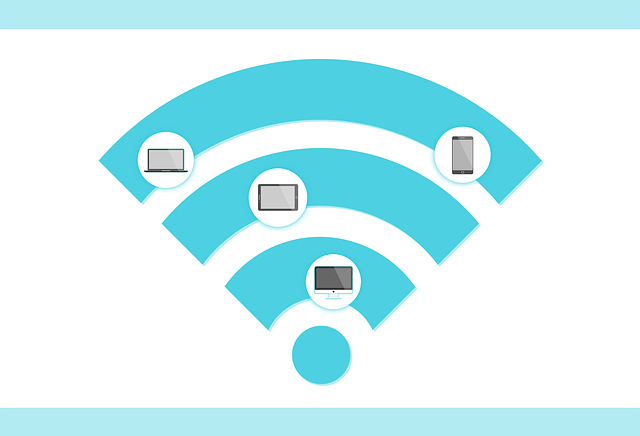Whether you’re at work or at home, there are few things that can be as frustrating at a slow internet speed. There are a lot of reasons, like location, DNS, and wireless network that can stop you from getting the full download and upload speeds promised. If the router is getting the kind of connection it should, however, then it might be something else is either blocking or consuming too much of that bandwidth. So, it’s time to take a look at all the usual suspects.
Stop streaming while you work
It’s all-too-common that the mystery isn’t much of a mystery at all. A lot of people video streaming services like Netflix and Youtube when they’re doing work. It provides background noise and is often used as a helpful tool when you’re doing something else. You might have to get used to filling the void with something else, however. Video streaming services are notorious bandwidth hogs. If more than one person is using them at once on one connection, then you can expect some horrendous speed drops for the rest of those connected to the network.
Programs you’ve missed
There are a lot of programs that could be running under the surface that contribute to your lower speed just as much, however. It’s a good idea to make an audit of your programs now and then. Use the Windows Resource Manager if you’re on windows to get a look at which programs are taking up the most bandwidth. Stop those processes that are safe to stop, and see if they’re amongst the programs that boot up automatically when you start your computer. Some background processes might be harmless enough, but that doesn’t mean they’re not maintaining a connection that is eating your bandwidth and giving you very little in return. Then, there are those that aren’t quite as happy to just go when you tell them.
Malware
Those processes that stick around are most often malware. There are a lot of ways that viruses and spyware can soak up your bandwidth. Some use your computer to send thousands of spam messages in a day. Others connect you to a private network that not only gives strangers a backdoor to your network, but makes extensive use of it at the same time. Just another reason to take your device’s digital security seriously. Not just your computers and laptops, either. Your smartphones and tablets should also have firewalls, antiviruses and antispyware software installed on them. Otherwise, they might be the vulnerability that malware uses to get access to your network.
Your operating system
It’s not malware, but certain operating systems are starting to attract their fair share of sideways looks because of just how disruptive they can be. Windows 10, for instance, provides a lot of functionality and good design for its users. It also has quite a few ways that it can waste your bandwidth. It’s peer-to-peer update downloads might be useful to them in providing fixes, but it keeps you constantly connected to them, which can eat enough bandwidth on its own. OneDrive is another feature that got a big push with the operating system, offering Cloud-like services to device owners, but also means seeing a lot more bandwidth get used. These features are generally turned on with most Windows devices, but they’re not too difficult to disable, remove and replace, thankfully.
Your walls
It’s not all about what happens within the bounds of your device, either. There are plenty of ways your surroundings can stop you from accessing the bandwidth that should rightfully be yours. Physical barriers can play a big role in that. Even enough physical space can be enough to put you out of reach of your router. But, thankfully, devices like the best wifi range extender can remove both walls and space as a barrier to your internet access. If you can’t use a tool like that, then you’re going to have to move your device closer to the router itself. Dead spots are always going to be a problem if you’re not willing to use a booster. Even if it seems like you’re in good range, you just won’t know until you try and connect.
Interference
You shouldn’t put your devices too close to the router, however. You need to give them at least three feet of clear space. Nor should you assume that it’s just a wall or physical space that’s the problem. There are other things that can interfere with how strong a signal your router is able to maintain. Nearby electronics are some of the most common disturbances. Metal and mirrors are others that might not seem like they should have an effect, but certainly can. If you’re using mobile devices, even your hand, and you in general, can get in the way. In those cases, just reposition yourself so there’s less of you between your device and the router, wherever you are in relation to it.
Other users
Sometimes the crime of ‘what stole the bandwidth’ isn’t always one without a human perpetrator. In a business or in the home, any one of your users might be making the mistake above. They might be streaming, using other bandwidth intensive software, or have malware that’s causing issues for everyone on the network. In those cases, you can use tools like network diagnostics software that can tell you about all the different devices on the network. It can also tell you which devices are using the most. When you find them, it’s all about seeing which of the above issues is causing their device to use quite so much of your internet. Sharing a network demands the occasional compromise. Sometimes people just have to turn off their streaming videos to let you work in peace.
If none of the above works, then it’s time to get in contact with your web service provider. Maybe your router isn’t getting all the data it should. Maybe it’s damaged or too old. Perhaps your provider might be intentionally limiting your data access. Whatever it is, they should be able to help you further, especially if you threaten to take your business elsewhere.











Comments are closed.